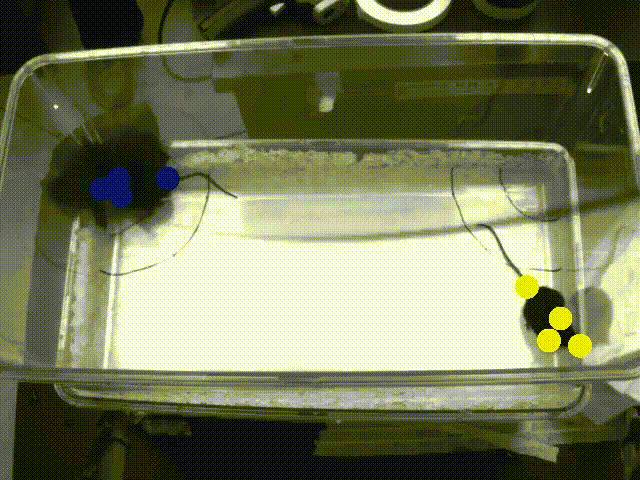
Techniques
We employ behavioral, computational, and in-vivo neural imaging/manipulation techniques to examine how the brain encodes information and produces adaptive and maladaptive behavioral outcomes.
A Multilayer Research Pipeline
1) Understand a specific behavior
2) Form a theoretical framework for the behavior
3) Computationally represent the framework as a model
4) Map the model onto neural circuitry

(1)
(2)
(3)
(4)
Behavior
Understanding how neural activity encodes information is limited if it is not accompanied by complex behavioral analyses. Our research includes a deep understanding of complex behavior at every stage. We employ a large variety of learning and memory paradigms including but not limited to Pavlovian appetitive and fear conditioning as well as operant conditioning (reinforcement and punishment paradigms). We also investigate how animals learn from observing and interacting with their conspecifics.



Computational Modeling + Machine Learning
Kutlu Lab's ultimate goal is to achieve a better theoretical understanding of the "brain-behavior interface". We utilize computational modeling as a tool for this goal. Our research utilizes computational modeling two specific ways: 1) Understanding and predicting Pavlovian and operant conditioning behavior. 2) Utilizing machine learning and neural network modeling for understanding how neural activity patterns give rise to certain behavior and encode specific types of information during associative learning.


Fiber Photometry / Single Cell Imaging via Miniscopes
Fiber photometry uses the genetically encoded indicators to record population activity of genetically defined sub-populations of neurons and neuromodulators through an optic fiber in freely moving animals. In addition to fiber photometry, imaging via miniaturized endoscopes allows us to record neural activity at the single cell level while animals perform behavioral tasks. We employ these techniques in order to understand how neurotransmitters and neuronal populations encode specific types of information required for associative learning.
Optogenetics / Chemogenetics
Optogenetics (light activated ion channels to induce/inhibit action potential firing) and DREADDs (Designer Receptors Exclusively Activated by Designer Drugs) are two ways to. manipulate the activity patterns of neuronal sub-populations. We use these techniques to show causal relationships between neural activity and the type of information encoded in rodent brain during complex behavior.
